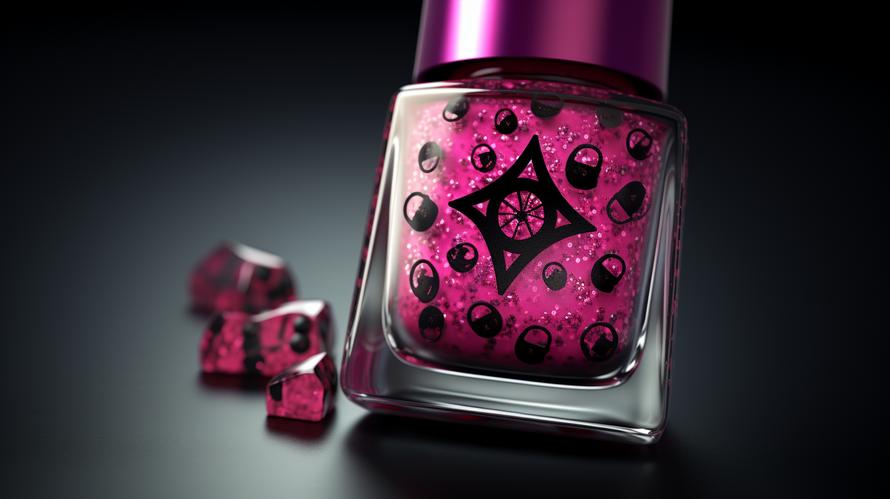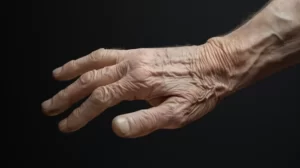Imagine how excited you were when your favorite nail polish brand announced they had removed all those nasty chemicals from their products. Gone were the days of worrying about the toxic trio of toluene, dibutyl phthalate (DBP), and formaldehyde, which have been linked to cancer and birth defects. You could now paint your nails with peace of mind, knowing you were keeping yourself safe from harm. But what if you weren’t?
The California Department of Toxic Substances Control (DTSC) recently conducted tests on some popular nail polish brands claiming to be toxin-free. The results? Many of those shiny bottles with reassurances stamped on their labels were found to still contain at least one of the toxic trio, putting you right back in harm’s way.
Before we delve into the brands in question, let’s take a closer look at these sinister substances and the reasons you need to avoid them.
Toluene
This chemical can affect the central nervous system and cause headaches, dizziness, and even memory loss with prolonged exposure. Pregnant women, in particular, need to avoid toluene as it can harm the development of the baby’s brain and nervous system, risking cognitive and behavioral problems later in life. Not something you want in your nail polish, right?
Dibutyl Phthalate (DBP)
DBP is a plasticizer used in nail polish to make it more flexible and less likely to crack. The problem is, this chemical has been linked to hormonal disruptions and reproductive issues in animals, with potential harm to humans as well. The European Union has already banned the use of DBP in cosmetics, but it’s still allowed in the United States, despite many companies claiming to have removed it from their products.
Formaldehyde
You probably recognize this name as a preservative used to embalm dead bodies (yikes!). It’s also used as a strengthening agent in nail polish. Formaldehyde is a known human carcinogen and can cause respiratory irritation, asthma, and skin allergies. While most nail polish brands claim to have removed this chemical from their formulas, the DTSC found that some still contain traces of it.
Now that you know what you’re up against, you’re probably thinking about tossing all your nail polish in the trash and swearing off manicures for good. But don’t despair just yet. The DTSC test results have outed some deceitful brands, so you know who to watch out for.
The tested products that were found to be incorrectly labeled include:
- Cacie Light Free Gel Basecoat
- Sation 53 Red-Pink Nail Color
- Sation 99 Basecoat
- Dare To Wear Nail Lacquer
- Chelsea 650 Baby’s Breath Nail Lacquer
- Paris Spicy 298 Nail Lacquer
- New York Summer Nail Color
- Sunshine Nail Lacquer
- Cacie Sun Protection Topcoat
- Golden Girl Topcoat
- Nail Art Top-N-Seal
- High Gloss Topcoat
Miss Professional Nail Products, the makers of Sation products, have claimed the DTSC tests are mistaken. However, it’s important to still be cautious when using products from brands that have been shown to contain these harmful chemicals.
So, what can you do to protect yourself from these toxins while still enjoying the fun of painting your nails?
- Read Labels Carefully
While the DTSC test results show that some labels might not be entirely truthful, they do give you a starting point. Look for products that boldly advertise as being free from the toxic trio and don’t be afraid to dig a little deeper. If a brand makes the effort to state their products are toxin-free on their label, it’s more likely they will be. -
Research Brands
Before purchasing a new nail polish, do some research on the brand. Check their website and read customer reviews to see whether they uphold their toxin-free claims. Also, look into smaller, eco-friendly companies who place a greater emphasis on creating safe and natural products. -
Use a Well-Ventilated Space
No matter which nail polish brand you use, always apply your polish in a well-ventilated area to minimize your exposure to any potentially harmful fumes. Open a window or turn on a fan to allow fresh air to circulate while you paint your nails. -
Take Care of Your Tools
Finally, always clean and sanitize your nail tools (clippers, files, etc.) to reduce the risk of infection and limit your exposure to harmful chemicals.
In conclusion, while it might be disheartening to learn that some nail polish brands are not being entirely truthful about their toxin-free claims, there are ways to stay informed and protect yourself. By being vigilant and doing some research, you can continue to enjoy your favorite nail colors without worrying about the impact on your health.



